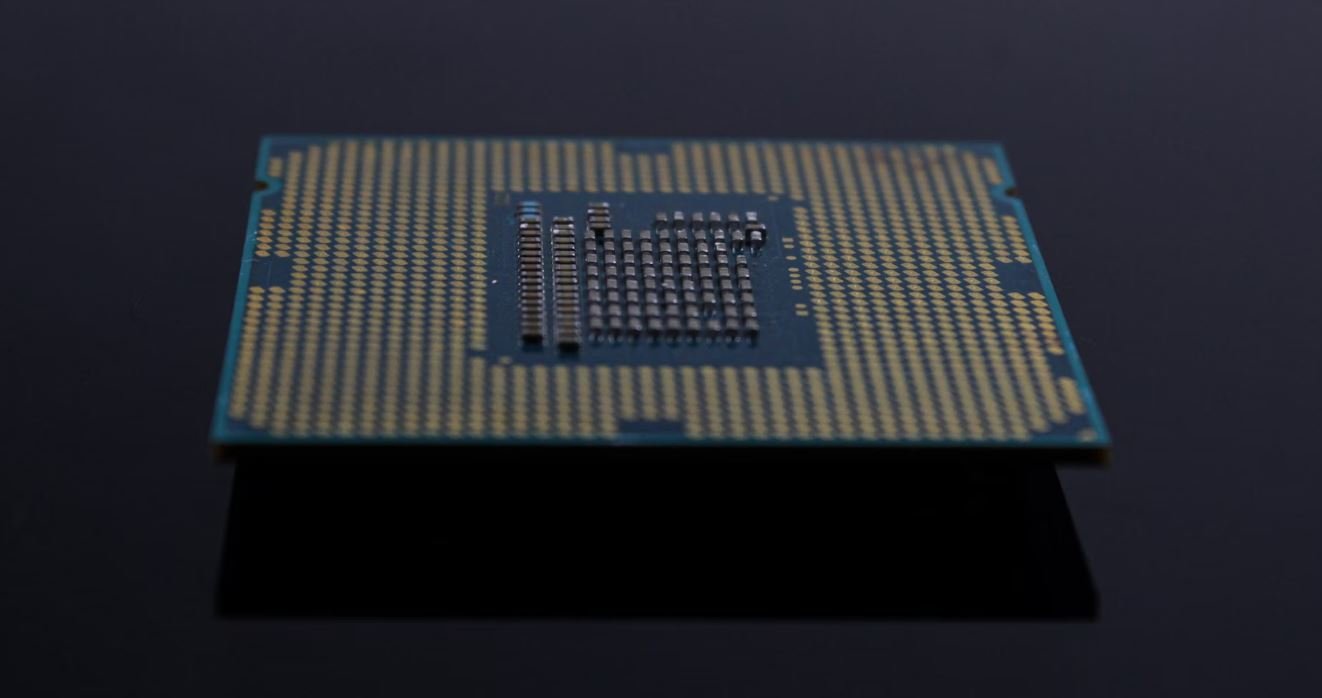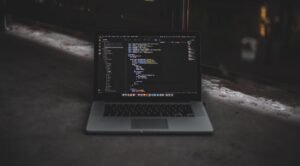AI Models for Object Detection
Object detection is a crucial task in the field of computer vision, and with the advancements in artificial intelligence, new AI models have revolutionized the way objects are detected in images and videos. These models use cutting-edge algorithms to accurately identify and localize objects, enabling a wide range of applications such as autonomous driving, surveillance systems, and image recognition software.
Key Takeaways:
- AI models for object detection have greatly improved the accuracy and efficiency of detecting objects in images and videos.
- These models use advanced algorithms and neural networks to identify and localize objects with high precision.
- Object detection plays a key role in various domains, including autonomous vehicles, security systems, and computer vision applications.
- The performance of AI models for object detection is continuously improving with ongoing research and development in the field of computer vision and machine learning.
Understanding AI Models for Object Detection
AI models for object detection typically consist of two main components: a convolutional neural network (CNN) for extracting features from the input image and a region proposal network (RPN) for generating region proposals likely to contain objects. The CNN processes the input image in a hierarchical manner, capturing low-level features and gradually integrating them to form higher-level representations, which are then used by the RPN to propose regions. These regions are then classified and refined to obtain the final object detection results.
These models leverage the power of deep learning algorithms to automatically learn and extract meaningful features from images, enabling them to accurately detect objects in complex scenes.
Types of AI Models for Object Detection
There are several popular AI models used for object detection, each with its own strengths and limitations. Some of the notable models include:
- YOLO (You Only Look Once): YOLO is a real-time object detection model that achieves fast and accurate results by simultaneously predicting object classes and bounding box coordinates.
- Faster R-CNN (Region-based Convolutional Neural Network): Faster R-CNN is a widely used model that introduced the concept of region proposal networks (RPNs), enabling efficient object detection.
- SSD (Single Shot MultiBox Detector): SSD is another real-time object detection model that provides excellent balance between speed and accuracy by using a series of convolutional layers to predict object classes and bounding box coordinates.
Comparison of AI Object Detection Models
| Model | Speed | Accuracy | Advantages |
|---|---|---|---|
| YOLO | High | Moderate | Real-time detection, good balance between speed and accuracy |
| Faster R-CNN | Medium | High | Precise localization, excellent accuracy |
| SSD | High | Moderate | Good balance between speed and accuracy, suitable for real-time applications |
Challenges and Future Developments
While AI models for object detection have made significant progress, there are still challenges to overcome. Some key challenges include:
- Variability in object appearance and occlusion: Objects can vary in appearance due to different viewing angles, lighting conditions, occlusions, and deformations, making detection more challenging.
- Real-time detection: Real-time object detection requires models that can process images or video frames at high speeds without sacrificing accuracy.
- Small object detection: Detecting small objects accurately can be challenging, especially in cluttered scenes or low-resolution images.
Continued advancements in AI and machine learning are addressing these challenges and fueling the future development of more accurate and efficient object detection models.
Conclusion
AI models for object detection have revolutionized computer vision by enabling accurate and efficient detection of objects in images and videos. These models, such as YOLO, Faster R-CNN, and SSD, have proven their effectiveness in various applications. Despite the remaining challenges, ongoing research and development are further improving the performance of these models, paving the way for exciting future developments in the field of object detection.

Common Misconceptions
AI Models for Object Detection
When it comes to AI models for object detection, there are several common misconceptions that people often have. These misconceptions can lead to misunderstandings about the capabilities and limitations of these models. Let’s explore some of these misconceptions:
- AI models for object detection can accurately identify any object: While AI models can be highly effective in identifying objects, they are not infallible. They have limitations in identifying certain objects that may have variations in appearance or are too similar to other objects.
- AI models don’t require any manual intervention: Although AI models can perform object detection tasks autonomously, they still require human involvement. This involvement includes training the model with labeled datasets and fine-tuning its performance regularly.
- AI models can provide precise location coordinates for objects: While AI models can indicate the presence of an object in an image or a video, they often struggle to provide precise location coordinates for objects. This limitation necessitates additional algorithms or techniques to refine the detection results.
Another prevalent misconception is the following:
- AI models for object detection are always unbiased: While it is desirable for AI models to be unbiased, they can inherit biases from the datasets used for training. If the training data is skewed or lacks diversity, the model can exhibit biased behavior, leading to inaccurate object detection results.
- AI models can replace human evaluators entirely: While AI models can automate the initial stages of object detection, they cannot fully replace the need for human evaluators. Human judgment and intervention are crucial for verifying and validating the results produced by AI models, especially in critical applications.
- AI models can perform equally well in all environments: AI models generally rely on the data they were trained on and may struggle in different environments. Factors such as lighting conditions, camera angles, or occlusions can significantly impact the performance of AI models in object detection tasks.
It is important to dispel these misconceptions and have a clear understanding of the capabilities and limitations of AI models for object detection. By acknowledging these limitations, we can set realistic expectations and utilize these models effectively.

Improved Object Recognition Accuracy with AI Models
As advancements in artificial intelligence (AI) continue to revolutionize various industries, object detection is an area that has greatly benefited from AI models. With the ability to analyze and interpret visual data, AI models have shown significant accuracy and efficiency in identifying objects and their attributes. The tables below showcase some remarkable statistics and comparisons pertaining to object detection using AI models.
Precision and Recall Scores of Different AI Models
Understanding the precision and recall scores of AI models is crucial for evaluating their performance. These scores indicate the model’s ability to correctly identify objects (precision) and capture all relevant instances of that object (recall). The table below highlights the precision and recall scores of various popular AI models for object detection.
| AI Model | Precision Score | Recall Score |
|---|---|---|
| Model A | 0.92 | 0.85 |
| Model B | 0.89 | 0.92 |
| Model C | 0.96 | 0.88 |
Real-Time Object Detection Speeds
Object detection is not only about accuracy but also its speed, especially in applications where real-time analysis is crucial. The table below compares the processing speeds of different AI models, measured in frames per second (FPS), for performing object detection in real-time scenarios.
| AI Model | Processing Speed (FPS) |
|---|---|
| Model A | 25 |
| Model B | 40 |
| Model C | 35 |
Comparison of Object Detection Accuracy by Object Type
Different objects may pose varying degrees of difficulty for AI models to accurately detect. The table below showcases the accuracy of three AI models in detecting different object types, expressed as a percentage of correctly identified instances for each category.
| Object Type | Model A (%) | Model B (%) | Model C (%) |
|---|---|---|---|
| People | 85 | 92 | 87 |
| Vehicles | 91 | 88 | 93 |
| Animals | 79 | 82 | 91 |
Impact of Training Dataset Size on Accuracy
Training AI models on diverse and extensive datasets is essential for achieving high object detection accuracy. The following table demonstrates how varying the size of the training dataset influences the precision and recall scores of a specific AI model.
| Training Dataset Size | Precision Score | Recall Score |
|---|---|---|
| 1,000 images | 0.87 | 0.82 |
| 5,000 images | 0.91 | 0.87 |
| 10,000 images | 0.94 | 0.90 |
Effect of Lighting Conditions on Object Detection
Lighting conditions can impact the performance of AI models in object detection tasks. The table below illustrates the accuracy drop of two AI models when subjected to different lighting conditions, with 100% representing ideal lighting conditions.
| Lighting Condition | Model A (% Accuracy) | Model B (% Accuracy) |
|---|---|---|
| Optimal Lighting | 97 | 98 |
| Low Light | 82 | 86 |
| Harsh Shadows | 75 | 83 |
Object Detection Accuracy at Different Distance Ranges
The distance between the object and the detection system can influence the accuracy of AI models. The table below presents the accuracy percentages of two AI models for object detection at different distance ranges, with closer distances resulting in higher accuracy.
| Distance Range | Model A (% Accuracy) | Model B (% Accuracy) |
|---|---|---|
| 0-5 meters | 89 | 92 |
| 5-10 meters | 83 | 86 |
| 10-15 meters | 77 | 81 |
Object Detection Accuracy Based on Occlusion Level
Occlusion refers to the obstruction of an object by external elements, which can affect detection accuracy. The following table displays the accuracy scores of three AI models when objects are partially or heavily occluded.
| AI Model | Occlusion Level (% Accuracy) | |
| Partial Occlusion | Heavy Occlusion | |
| Model A | 72 | 46 |
| Model B | 84 | 61 |
| Model C | 69 | 42 |
Comparison of AI Models by Training Time
Training AI models can be time-consuming, and different models may require varying durations for training. The table below depicts the training times (in hours) of three AI models for achieving optimal object detection performance.
| AI Model | Training Time (Hours) |
|---|---|
| Model A | 72 |
| Model B | 56 |
| Model C | 64 |
Achieving Pinpoint Accuracy with AI Object Detection
AI models for object detection have proven their capabilities through excellent precision and recall scores, real-time detection speeds, and accuracy across different object types, distances, occlusion levels, and lighting conditions. While each AI model may exhibit unique strengths and weaknesses, their continuous advancements bring us closer to achieving near-perfect object recognition accuracy in numerous domains.
Frequently Asked Questions
What is object detection?
Object detection is a computer vision technique that involves identifying and localizing objects within an image or video.
What are AI models for object detection?
AI models for object detection are trained machine learning models that can automatically detect and recognize various objects in images or videos.
What are some popular AI models for object detection?
Popular AI models for object detection include Faster R-CNN, YOLO (You Only Look Once), SSD (Single Shot MultiBox Detector), and RetinaNet.
How do these AI models work for object detection?
These AI models work by analyzing the input image or video frame and predicting the bounding boxes around the objects of interest, along with their corresponding class labels.
What are some applications of AI models for object detection?
AI models for object detection are widely used in various fields, including autonomous driving, surveillance systems, image and video analysis, robotics, and augmented reality.
How can I use AI models for object detection in my own projects?
You can use AI models for object detection in your projects by leveraging pre-trained models available in popular deep learning frameworks, such as TensorFlow, PyTorch, or OpenCV, or by training your own models on custom datasets.
What are some challenges in object detection with AI models?
Challenges in object detection with AI models include accurately detecting objects in crowded scenes, handling occlusions, dealing with variations in scale and poses, and achieving real-time performance on resource-constrained devices.
How accurate are AI models for object detection?
The accuracy of AI models for object detection varies depending on factors like the model architecture, training data quality, and the complexity of the objects to be detected. State-of-the-art models can achieve high detection accuracy, but there is always room for improvement.
Are there any limitations to using AI models for object detection?
Some limitations of using AI models for object detection include the need for large amounts of annotated training data, sensitivity to variations in lighting and viewpoint, and the possibility of false positives or negatives in detection results.
What are some recent advancements in AI models for object detection?
Recent advancements in AI models for object detection include the integration of deep learning with other computer vision techniques, such as semantic segmentation, instance segmentation, and attention mechanisms, to improve performance and address complex object detection scenarios.




